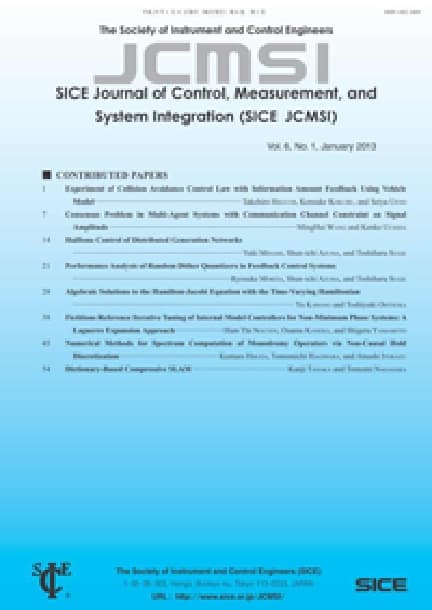Spline Trajectory Planning for Road-Like Path with Piecewise Linear Boundaries Allowing Double Corner Points
Hiroyuki KANO, Hiroyuki FUJIOKA
pp. 429-437
DOI:
10.9746/jcmsi.11.429Abstract
We consider a problem of trajectory planning for road-like path on the two-dimensional plane. As the basic tool for constructing trajectories, we employ smoothing splines using normalized uniform B-splines as the basis functions. The pass is assumed to possess piecewise linear boundaries, specified by a series of pairs of right and left corner points. We allow two-fold corner points in order to allow flexible description of the path. On constructing smoothing splines, we impose the boundary constraints as a collection of inequality pairs by right and left boundary lines, yielding a set of linear inequality constraints on the so-called control point vector. Unlike standard smoothing spline settings, a piecewise linear centerline of the given path is provided as the data for the trajectory to follow, where the given entire time interval is divided into subintervals according to the centripetal distribution rule. Other constraints, typically as the initial and final conditions, can be imposed on the trajectory easily, and we see that the problem reduces to strictly convex QP (quadratic programming) problem. Efficient QP solvers are available for numerical solution, and the effectiveness of the proposed method is confirmed by three examples: two with piecewise linear boundaries including an example of obstacle avoidance problem, and the third with piecewise linear approximation of circular boundaries.
Readers Who Read This Article Also Read
ISIJ International Vol.55(2015), No.9









